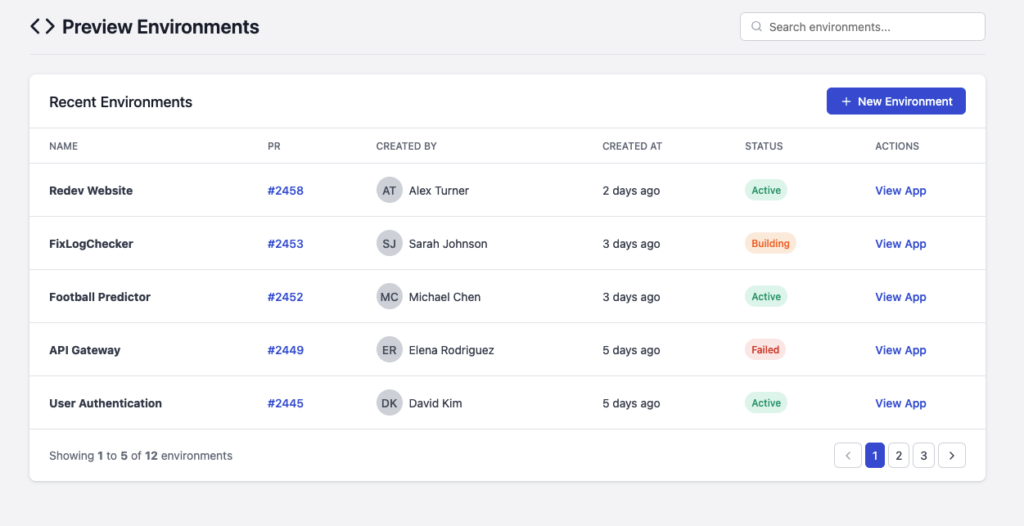Preview Environments
In the fast-evolving world of software development, efficiency and collaboration are key to delivering high-quality products. A critical challenge developers face is testing code changes before merging them into the main codebase. To address this, a new tool called Preview Environments has emerged – a solution that began as a university dissertation and is now transforming development workflows in a real-world industry setting.
The Birth of Preview Environments
Originally developed as an academic project, Preview Environments addressed the inefficiency of testing PR changes in realistic settings. It quickly proved its value in industry, demonstrating how academic research can lead to practical solutions.
How It Works
Preview Environments simplifies the testing process through automation:
- Automated Builds – When a developer submits a PR, the tool automatically builds the updated code into a Docker image.
- Containerised Testing – A live, isolated environment is created using the Docker image, allowing developers and QA teams to test changes in real time.
- Seamless Integration – The environment mimics production, reducing risks before deployment.
Transforming Development Workflows
Preview Environments has led to faster feedback loops, improved team collaboration, and reduced deployment risks by detecting issues early. By integrating with CI/CD pipelines, it enhances productivity and code quality.

Overcoming Challenges
The development of Preview Environments was not without obstacles. Key challenges included:
- Optimising Docker builds to reduce image sizes and improve efficiency.
- Managing ephemeral environments to prevent resource waste.
- Ensuring scalability to accommodate larger teams and complex projects.
These hurdles provided valuable insights into performance optimisation and user-centric design.
From Academia to Industry
To transition from a university project to an industry tool, the code was refactored for robustness, feedback was gathered for functionality improvements, and integration with existing workflows was ensured. This process highlighted the real-world impact of academic innovation.
The Road Ahead
Future enhancements for Preview Environments may include:
- Automated Testing Integration – Running tests directly within containerised environments.
- Resource Monitoring – Tracking performance to optimize efficiency.
- Cloud Expansion – Leveraging cloud services for greater scalability.
With continuous improvements, the tool aims to further revolutionise development workflows.
Conclusion
Preview Environments shows how innovative ideas can become powerful industry solutions. Originally a university project, it now enhances software development by improving testing, collaboration, and quality. Ready to revamp your development process?
